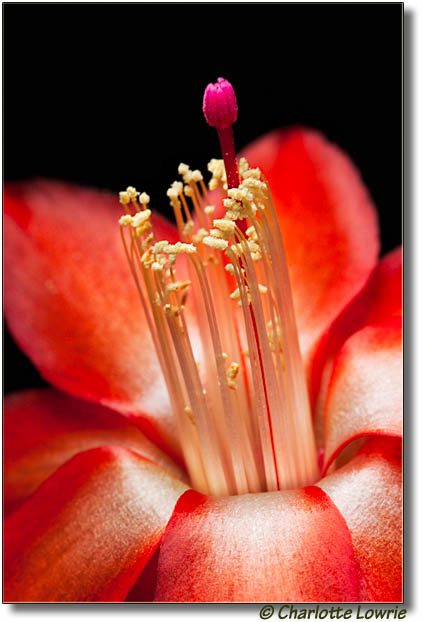By Charlotte Lowrie
I can't
count the number of times that there has been something slightly
wrong with a scene or subject that I'm about to or just photographed, and, without hesitation, I think, "I'll fix it in Photoshop."
But after years of shooting, I'm rethinking
the I-can-fix-it approach.
Sure, I can fix it, but the compelling question is, do I want to ?Do I want to spend my time glued to a computer monitor and
tethered to a mouse or stylus?
I have fixed a lot of
imperfections in thousands of pictures. For posterity, let me recount the
flaws I've fixed in countless pictures.
- Spots from dusty sensors in a numerical range that is
beyond my mere human comprehension. (I'm convinced that
digital imaging sensors are pre-magnetized so that when the lens comes off, dust
particles
hanging around in nearby air space are alerted so they can
descend on the sensor at a moment's notice. And I haven't
overlooked the possibility of a conspiracy theory. Who's to
say that dust particles don't have an agreement: The largest
and most oddly shaped dust clod falls
somewhere close to the center of the sensor while the
smaller
particles gang up in each of the four corners.
- Small, medium, and large scene
distractions. I've obliterated everything from double and
triple chins and crow's feet to old-growth trees and city
skylines.
- My own stupid mistakes. These mistakes
include, but are not limited to, periodically forgetting to switch aperture to blur the
background and vice versa (though the reverse is just about
impossible to fix).
- Specular highlight blowouts to numerous
to recall.
- Entire city blocks worth of buildings
leaning precariously in on themselves forecasting an
impending implosion.
- Rotten apples in a barrel, insect-gnawed
flower petals, moiré on fabrics, wrinkles in dresses, and
the list goes on longer than there are hours in a day to fix
them.
Frontier
Outlaws Thinking about the hours of digital
editing that I've done makes me question
the digital proce ss in general. I thought back to those
endearingly grainy pictures of frontier outlaws, of my
great-grandparents, parents, and even snapshots of me and my
siblings as a children.
ss in general. I thought back to those
endearingly grainy pictures of frontier outlaws, of my
great-grandparents, parents, and even snapshots of me and my
siblings as a children.
In that world, all manner of wrinkles -- in
faces and clothes -- were okay. And in those days, the
camera documented reality, and people gladly accepted
unvarnished reality for what it was.
Ah, but there is another and very important difference. In those
days, people and photographers went to great lengths to ensure
that everyone wore their best Sunday-best clothes and had their
hair carefully slicked back, pinned up, or curled. And, I
suspect, that photographers ensured that the "sets" were
immaculate, or at least acceptable. There was the sense (again,
my conjecture) that the picture couldn't be done over--neither
retaken, nor reworked to perfection in the darkroom.
I've considered that approach carefully
lately. It made me ask myself if digital had become an excuse
for sloppy preparation, and ultimately, for sloppy shooting. In
a good many cases, my answer was yes. The power of digital
capture and of digital processing can be, in this regard, a
double-edged sword.
Sure, it's great that we can tweak color and
not have to live with the color a one-hour lab machine or
underpaid and perhaps under trained lab tech gives us. And, I'm
well aware that until digital cameras are perfected, we'll have
to fix some inherent capture flaws. And given the nature of
lenses, I can live with fixing leaning buildings too,
particularly when I consciously chose to shoot at a close-in and
upward angle.
On a Mission But I,
for one, am on a mission to fix what can be fixed on the set or
on location, with the ultimate goal of reducing the number of
hours I spend looking at a computer monitor. In short, I'm
mending my sloppy ways.
Now,
when I'm setting up for a portrait session, I will roll off
fresh white seamless paper, or I'll steam the muslin. Sure
I can fix the previous person's footprints on the seamless paper
in Photoshop, but I don't want to. And when I'm outdoors, I will
look for a better plant or flower--one that I don't have to
reconstruct after insect snacking or resurrect from heat
exhaustion in Photoshop. I will look for unblemised flowers like the Zygo Cactus flower shown here.
While I love shooting RAW format images, I'm
acutely aware that RAW adds a step to the workflow. Until
recently, I felt compelled to work the picture in the RAW
conversion program, and then to rework the picture in Photoshop
to get to absolutely neutral color. Finally, I asked myself why
I was doing the work twice. If the color that I got in the RAW
conversion program looked good and printed good, then why change
it in Photoshop? So now, I don't work pictures twice.
For the time I've devoted to getting it right in the camera, I've reclaimed precious hours for shooting. After all, I'd much rather be shooting than fixing on
the computer what I should have fixed on the scene.
...Charlotte...
Related articles:

